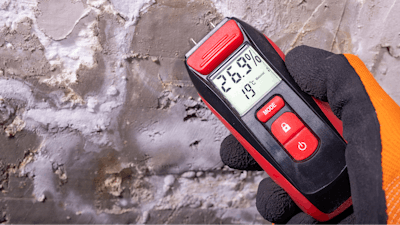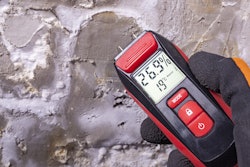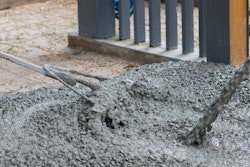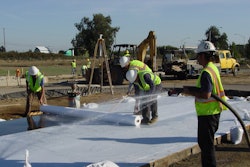
An approximately 2,000-year-old technology, concrete is used as a structural component in commercial/ residential buildings, pavements, and driving surfaces of bridges and roads. From earlier use in the Great Pyramids at Giza and the Great Wall of China to modern 3D Printed buildings, concrete is currently being utilized due to its longevity, versatility, strength, durability, in-service energy efficiency, resilience, and economical benefits compared to other masonry composites and/or building materials. However, concrete is not maintenance-free.
Moisture is one of the major concrete system enemies.
Water, the lifeblood of concrete is its best friend and worst enemy. Moisture sources and presence in concrete systems could be both external and internal. Since internal sources of moisture in concrete structures mostly lead to ultimate coating failures, including during application and long-term durability, the goal is to concentrate on the latter (internal) water source.
Problems & Challenges of Internal Concrete Moisture
 Pecora Corporation
Pecora Corporation
The second influence of internal concrete moisture is associated with the curing process and the speed of drying at the concrete surface. Excessive water evaporation at the concrete surface can lead to some significant problems in the application of coatings, including adhesive failure, blistering, discoloration, bubbles/pop-outs, cracks, delamination, efflorescence, mildew/ mold development, etc. These are the results of a water-starved concrete surface reaction leading to weak and substandard surface cures.
The infiltration and absorption of water into concrete coupled with freeze-thaw cycling and associated expansion with internal ice formation will lead to the creation of cracks, corrosion of internal steel, and disintegration in concrete structures. Moisture vapor migrating through the slabs can also cause “efflorescence” or powdery crystalline deposit of salts on unsealed concrete.
 Pecora Corporation
Pecora Corporation
Under Pressure
Moisture content in concrete is all about water and pressure. The appropriate amount of water is needed to avoid excess pressure that may force any unreacted moisture to the surface of concrete and create a non-conductive substrate condition ultimately leading to coating adhesion failure.
It may take up to several weeks for concrete to cure depending on the thickness and environmental conditions (humidity, ambient temperature, etc.). The concrete continues to dry through moisture vapor transmission over time by drawing moisture up through capillary action to the slab surface (Sicilia, 2014).
 Relative humidity (RH) by the depth of concrete.Pecora Corporation
Relative humidity (RH) by the depth of concrete.Pecora Corporation
However, hydrostatic pressure and coating moisture tolerance are two separate effects of water on a coating system. Simply put, moisture tolerant products do not rely on atmospheric moisture/ humidity during the application process (do not react poorly to moisture during application).
On the other hand, hydrostatic pressure is a strong destructive force related to effects on the coating after application and curing, that can cause coating failure/ delamination through the moisture/ water vapor movement in the slab, typically by a moisture source located in the bottom of the slab. This migration of moisture may cause blow-offs or blisters on low moisture vapor permeable membrane surfaces by being trapped beneath an impermeable film on the surface (Josephsen, 2010).
About the authors
Roy Cannon is the Director of Construction Materials Technology at Pecora Corporation. He provides strategic and tactical oversight for overall corporate construction materials technology. Primary construction product lines include waterproofing components related to new construction and restoration of commercial building facades and horizontal concrete applications, i.e., expansion and control joint sealants, elastomeric liquid applied waterproofing membranes, pre-formed extrusions and flashings, and air and vapor barriers. Primary chemistries utilized are Silicone, Urethane, Latex, and STPU’s.
Tanzin Fatima is a Technical Service Representative and Document Editor at Pecora Corporation, an industry leader in product development and product enhancement of coating, sealant, and waterproofing solutions.


















